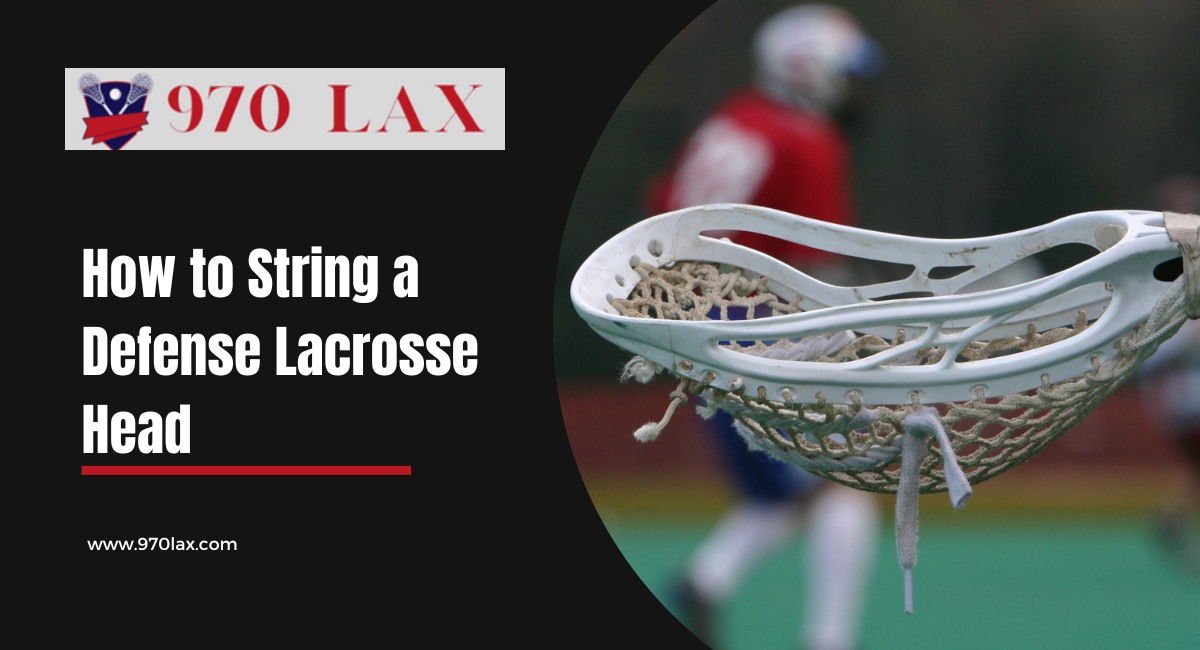Lacrosse is a thrilling and physically demanding sport that combines elements of strategy, finesse, and sheer athleticism. For those who play the position of defense in lacrosse, having a well-strung lacrosse head is crucial. A properly strung defense head can make all the difference when it comes to scooping ground balls, making precise passes, and delivering punishing checks. In this guide, we’ll walk you through the steps to string a defense lacrosse head effectively.
Tools and Materials
Before you start, it’s important to gather all the necessary tools and materials. Here’s what you’ll need:
- Lacrosse head: Make sure you have a high-quality, durable defense-specific head.
- Lacrosse mesh: Choose the type of mesh that suits your playing style and conditions. Hard mesh is popular among defense players for its consistency and hold.
- Shooting strings: You’ll need at least two shooting strings, but some players prefer more for added control.
- Sidewall strings: You’ll need a few sidewall strings to secure the mesh to the head.
- Nylon strings: These are used for the top string and bottom string.
- Lighter or heat source: You may need this to melt the ends of the strings for easy threading.
- Lacrosse ball: It’s useful for fine-tuning your pocket after stringing.
Step-by-Step Guide to Stringing a Defense Lacrosse Head
1. Prepare the mesh:
Start by folding your mesh in half to find the center.
Use a lighter or heat source to melt the ends of the mesh slightly, making it easier to thread.
2. Attach the top string:
Begin by threading one end of the top string through the top sidewall hole.
Pull the string through and tie it securely.
Repeat on the other side of the head, ensuring the mesh is centered.
3. String the sidewalls:
Start at the top of the head and work your way down, threading the sidewall string through the appropriate holes.
Make sure the mesh is pulled tight to create the desired pocket depth.
Repeat this process on both sides, maintaining symmetry.
4. Create the pocket:
Use shooting strings to create the desired pocket depth. Experiment with different patterns to find what works best for you.
The top shooting string should be tight, while the bottom one can be looser to allow for a quicker release.
5. Finish with the bottom string:
Thread the bottom string through the bottom sidewall holes.
Tie it off securely, and your defense head is ready.
6. Check the pocket:
Place a lacrosse ball in your pocket to see if it holds securely. Adjust the tension of the strings if necessary.
7. Fine-tuning:
Before you take your newly strung defense head onto the field, take some time to fine-tune the pocket. Make any necessary adjustments to the shooting strings, sidewall strings, and mesh to ensure a comfortable and consistent pocket.
8. Practice and Adjust:
Stringing a lacrosse head is a personal process, and it may take some trial and error to find the perfect setup that suits your playing style. Experiment with different patterns, mesh types, and tensions until you find what works best for you.
Conclusion
Stringing a defense lacrosse head is a skill that requires practice and patience. A well-strung head can give you the control, accuracy, and consistency needed to excel in the demanding position of defense. Whether you’re a seasoned player or just starting out, mastering the art of stringing your own head can be a rewarding and empowering experience. So, pick up your tools, experiment with different stringing techniques, and get ready to dominate the field with your perfectly strung defense lacrosse head.
Read More: What’s Slashing in Lacrosse? Understanding This Common Violation












